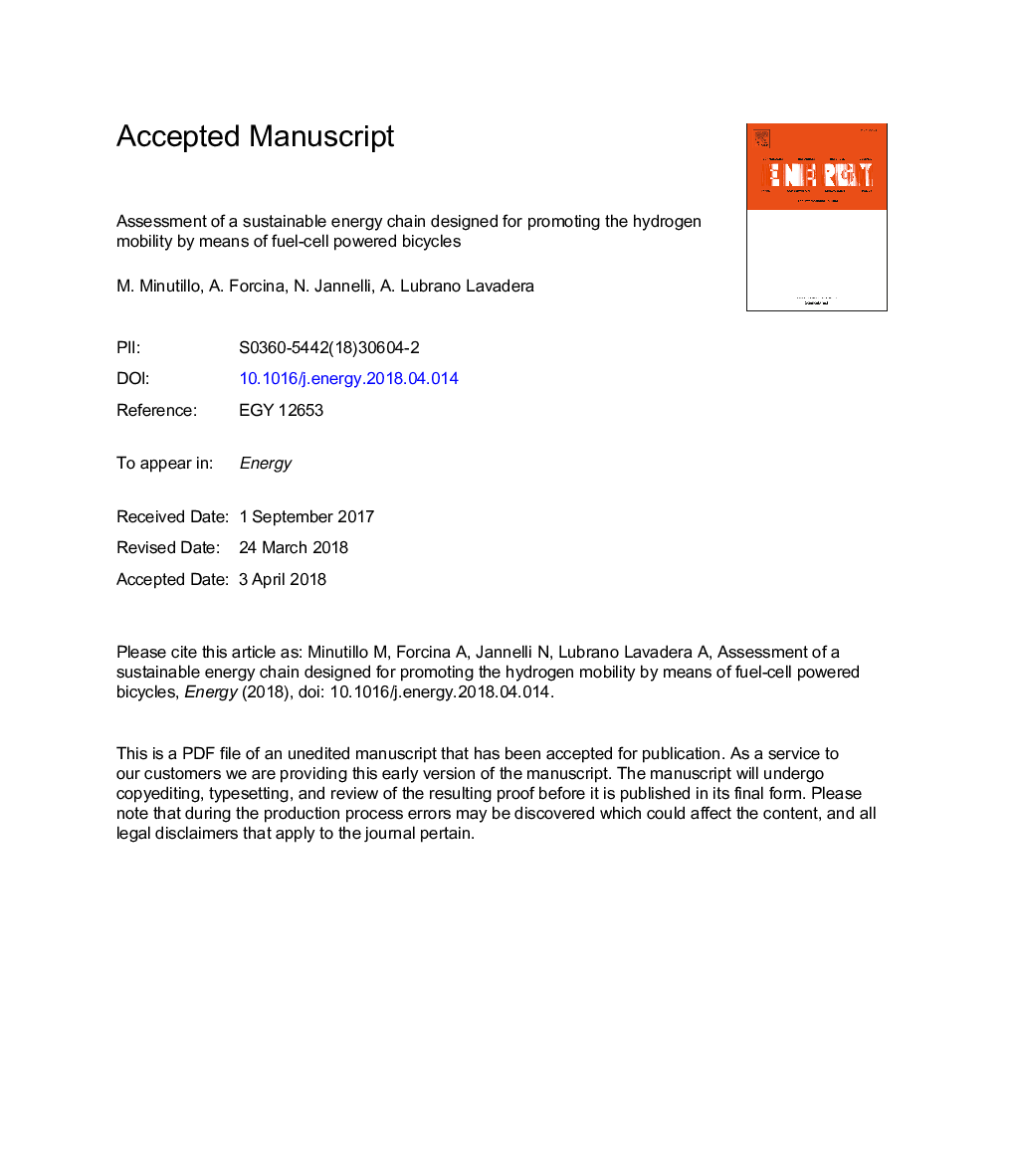| Article ID | Journal | Published Year | Pages | File Type |
|---|---|---|---|---|
| 8071557 | Energy | 2018 | 31 Pages |
Abstract
This paper aims to develop a sustainable energy chain that by means of a solar-driven electrolysis system produces renewable hydrogen used as fuel in fuel-cell-powered bicycles. The novel hydrogen bicycle model is the core of the bike-sharing program that is proposed in a Southern Italy tourist place. The sustainable energy chain development has required: i) the definition of the bike-sharing program based on some assumptions such as number of bicycles, number of routes, maximum number of trips per bike per day, mean driver weight, average cycling speed, etc.; ii) the analysis of the hydrogen bike performance; iii) the design of each involved energy sub-section such as the photovoltaic power plant, the hydrogen production system, the hydrogen storage unit and the hydrogen transportation and distribution section. The study has been conducted by implementing a design-sizing methodology. Results have highlighted that, according to the bike sharing program assumptions, the proposed sustainable energy chain consists of a 103â¯kWp PV power plant that, generating 129â¯MWh of electric energy, allows to produce 2190â¯kg of hydrogen by using an alkaline electrolyzer (16â¯kW). The bike sharing program, with 3772â¯km travelled in the selected area, contributes to reduce the greenhouse gas emission.
Keywords
Related Topics
Physical Sciences and Engineering
Energy
Energy (General)
Authors
M. Minutillo, A. Forcina, N. Jannelli, A. Lubrano Lavadera,
